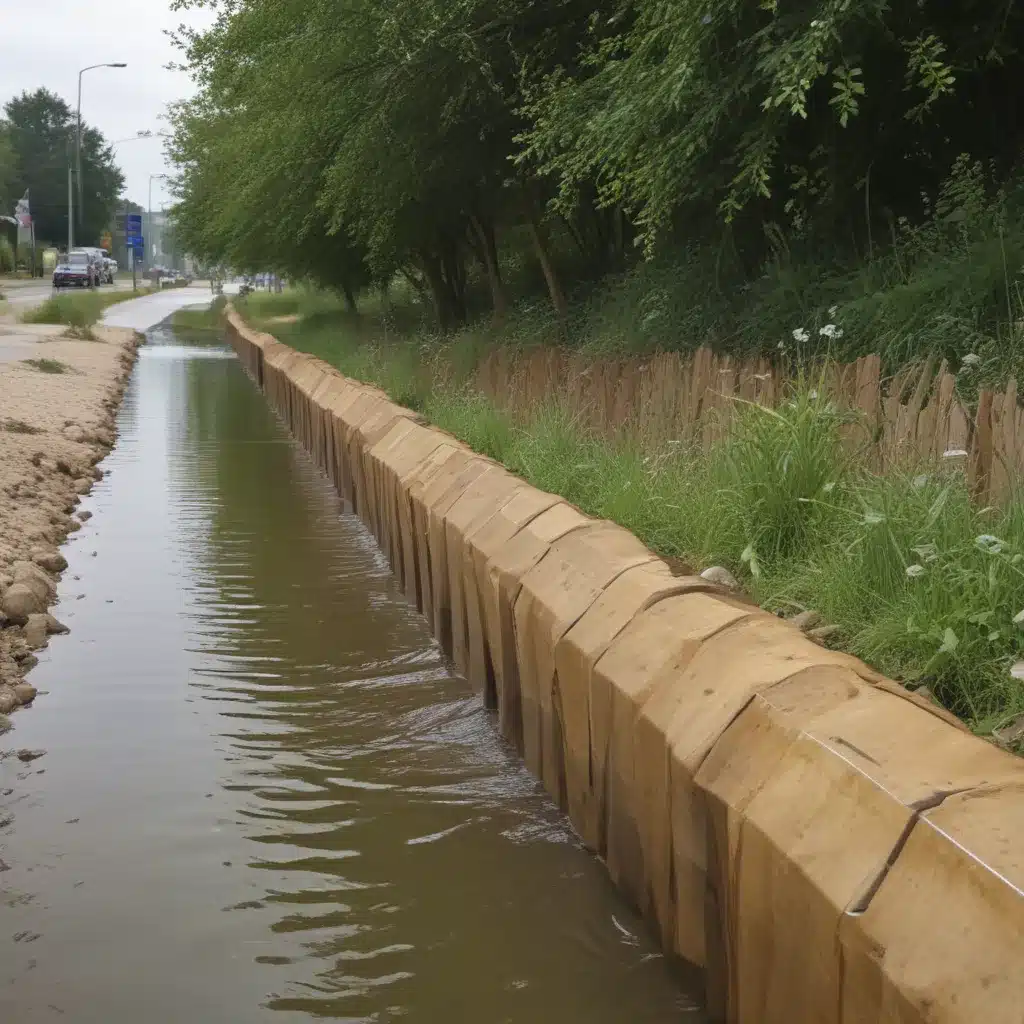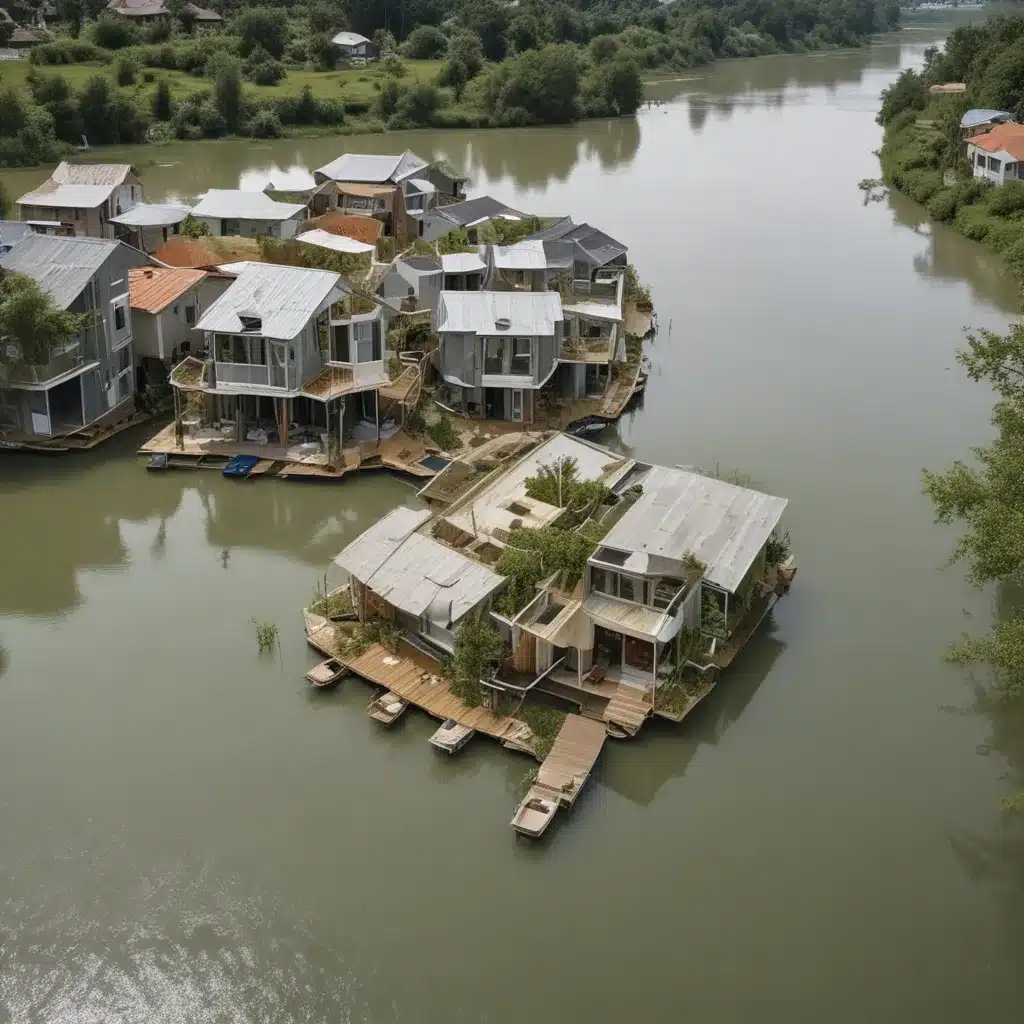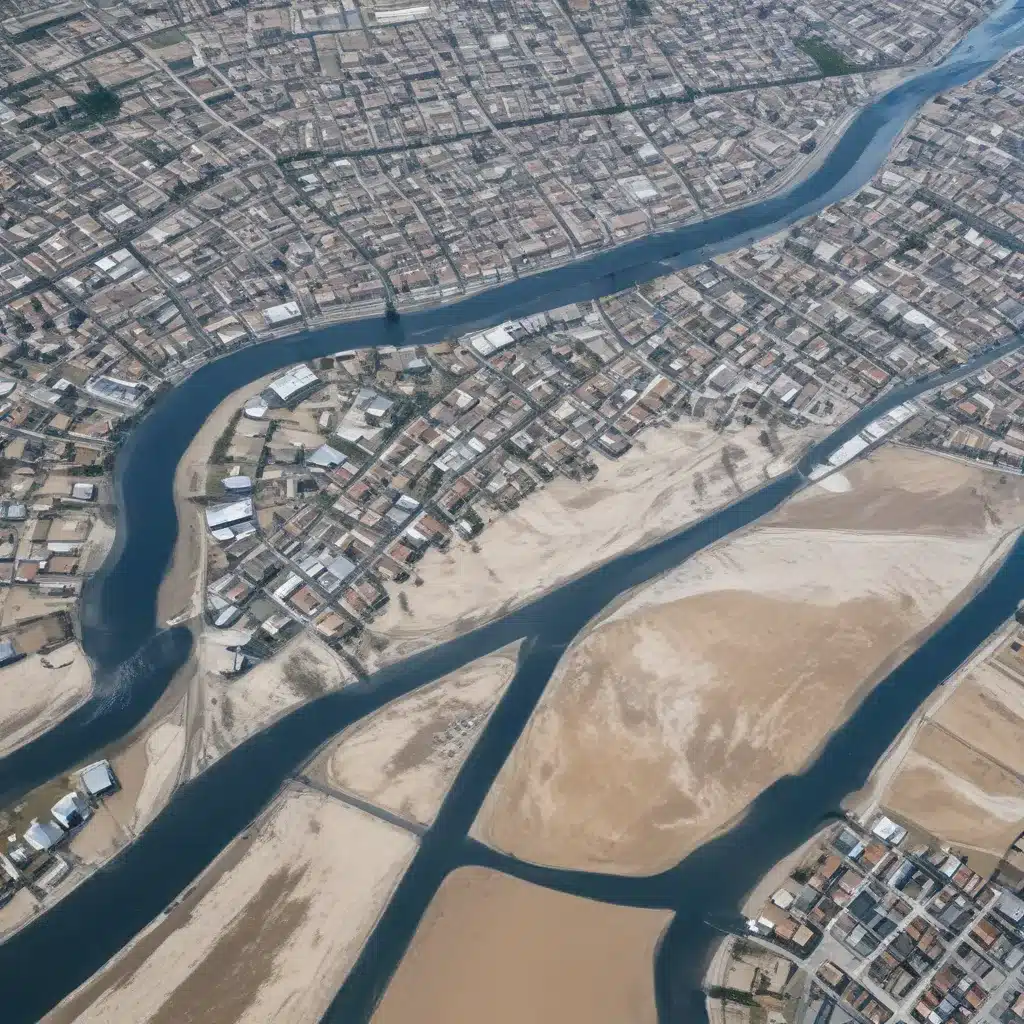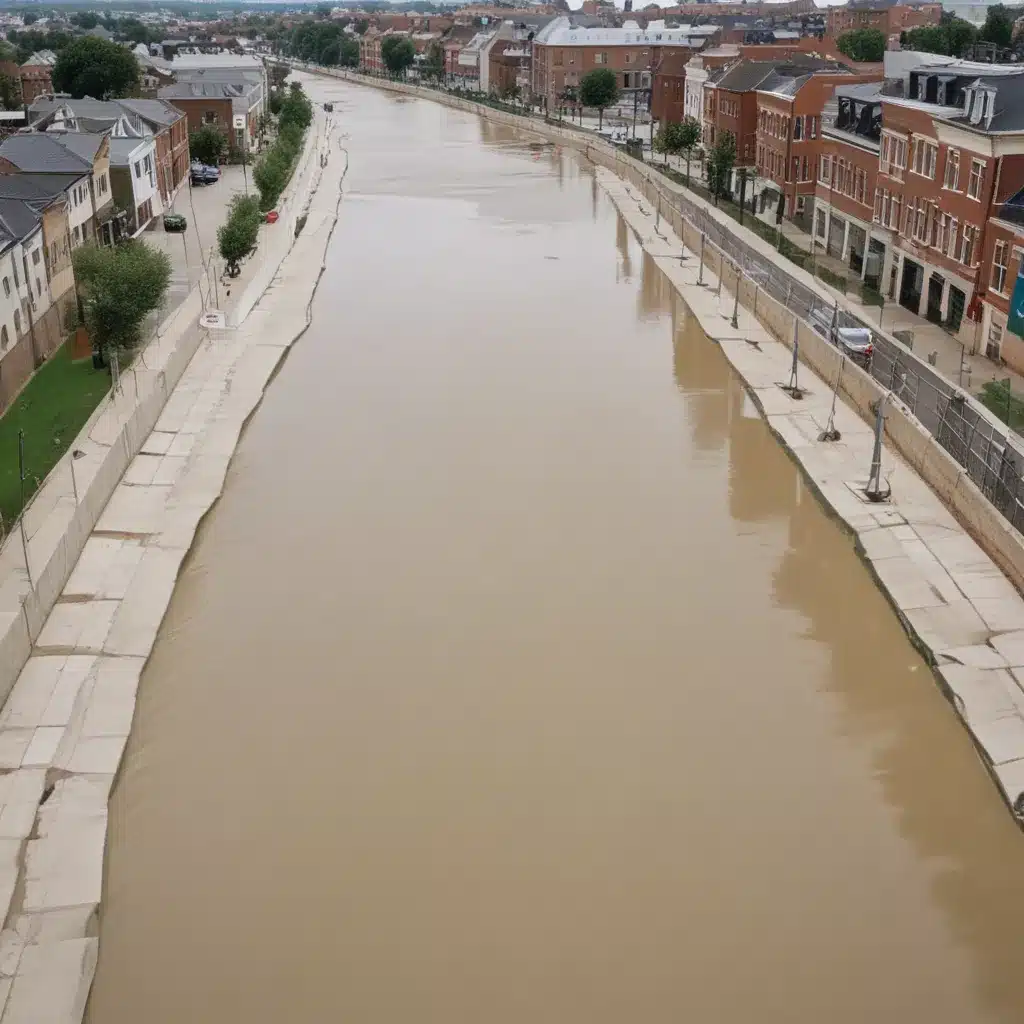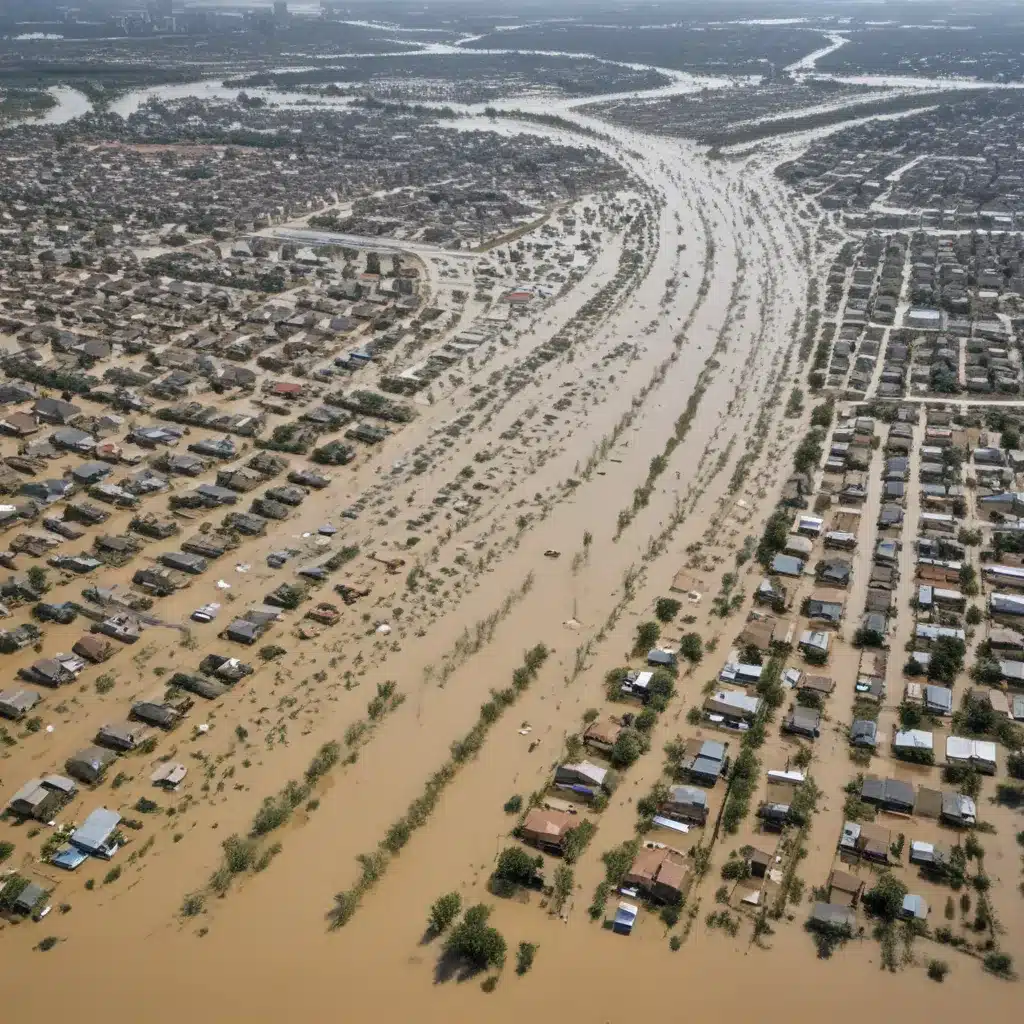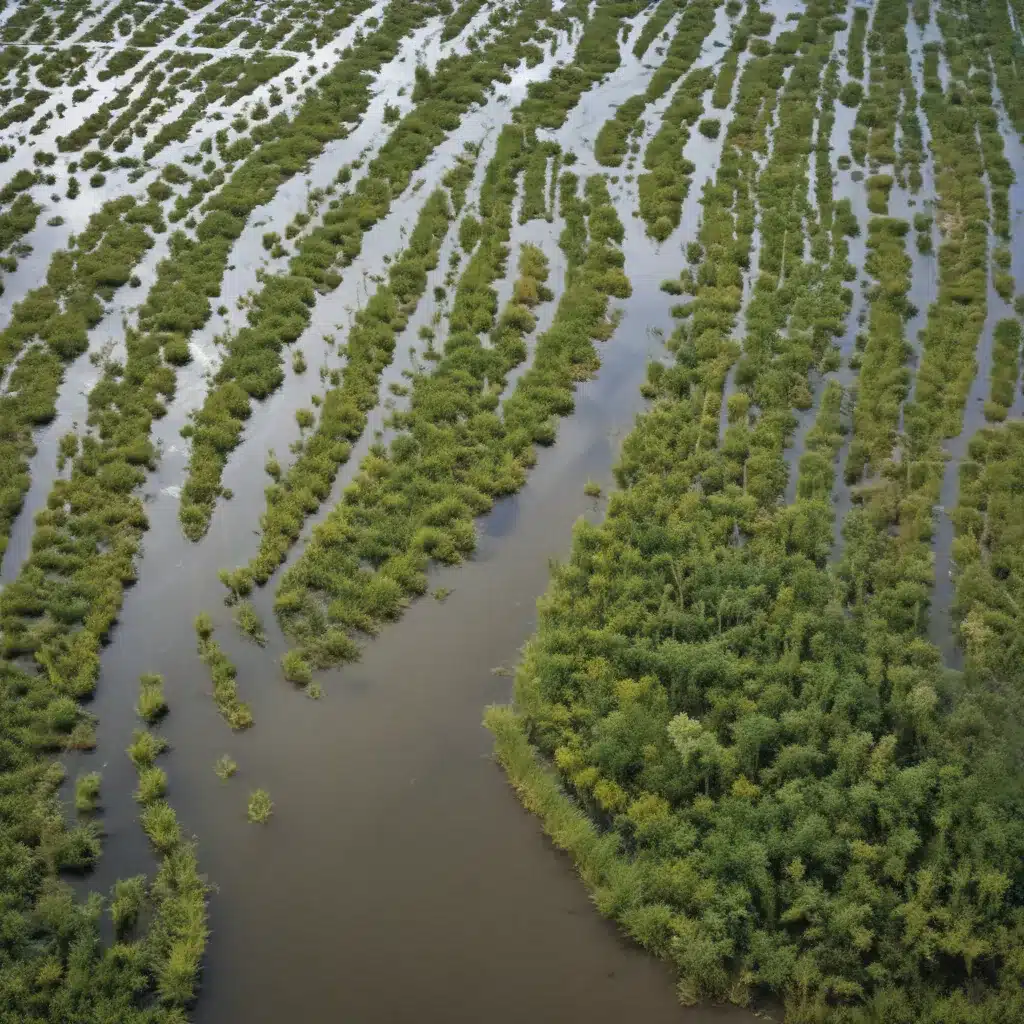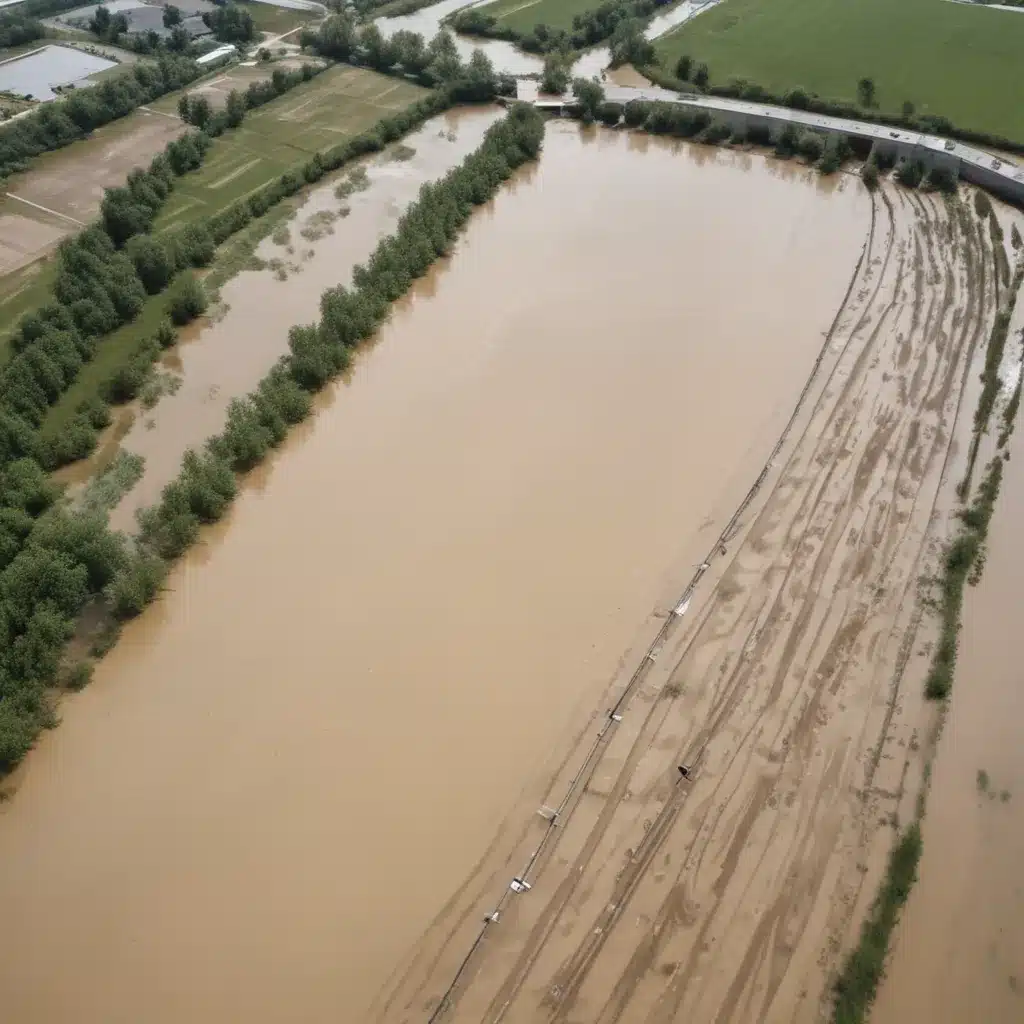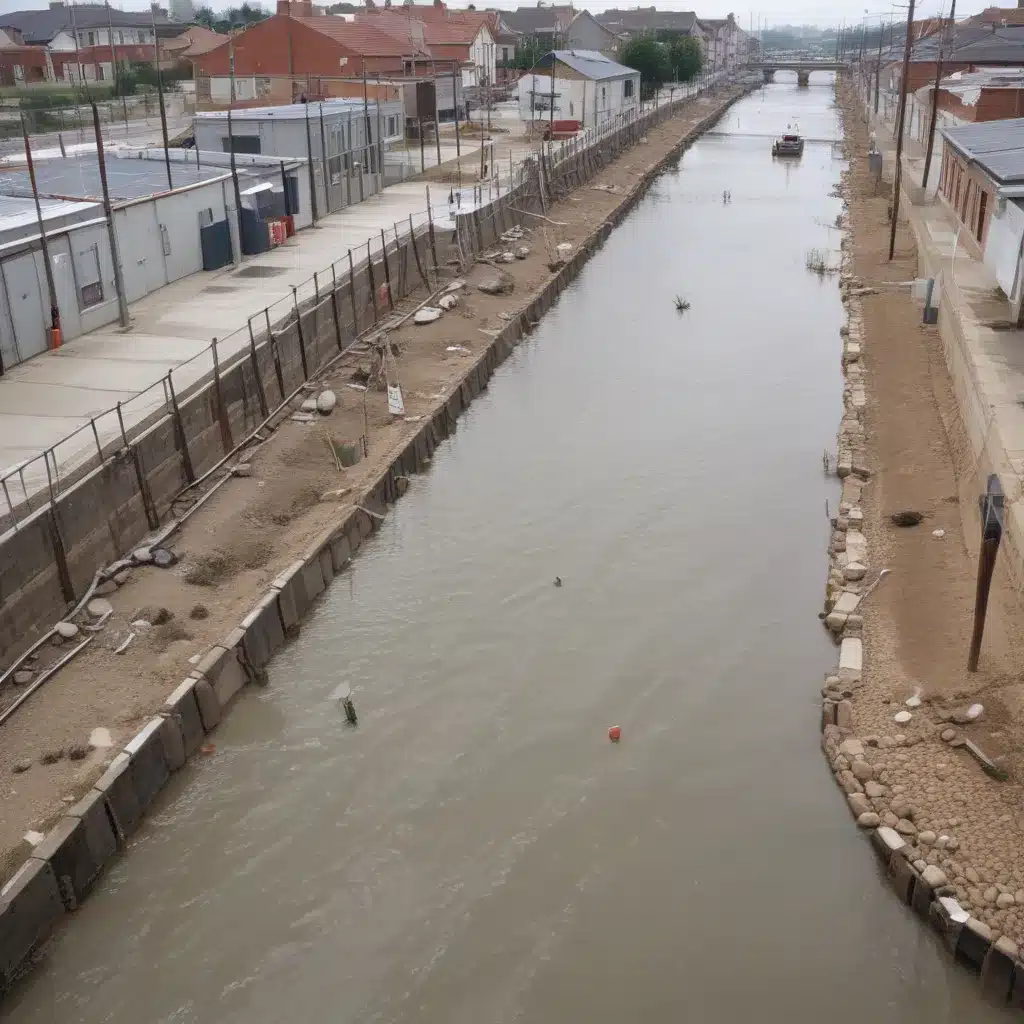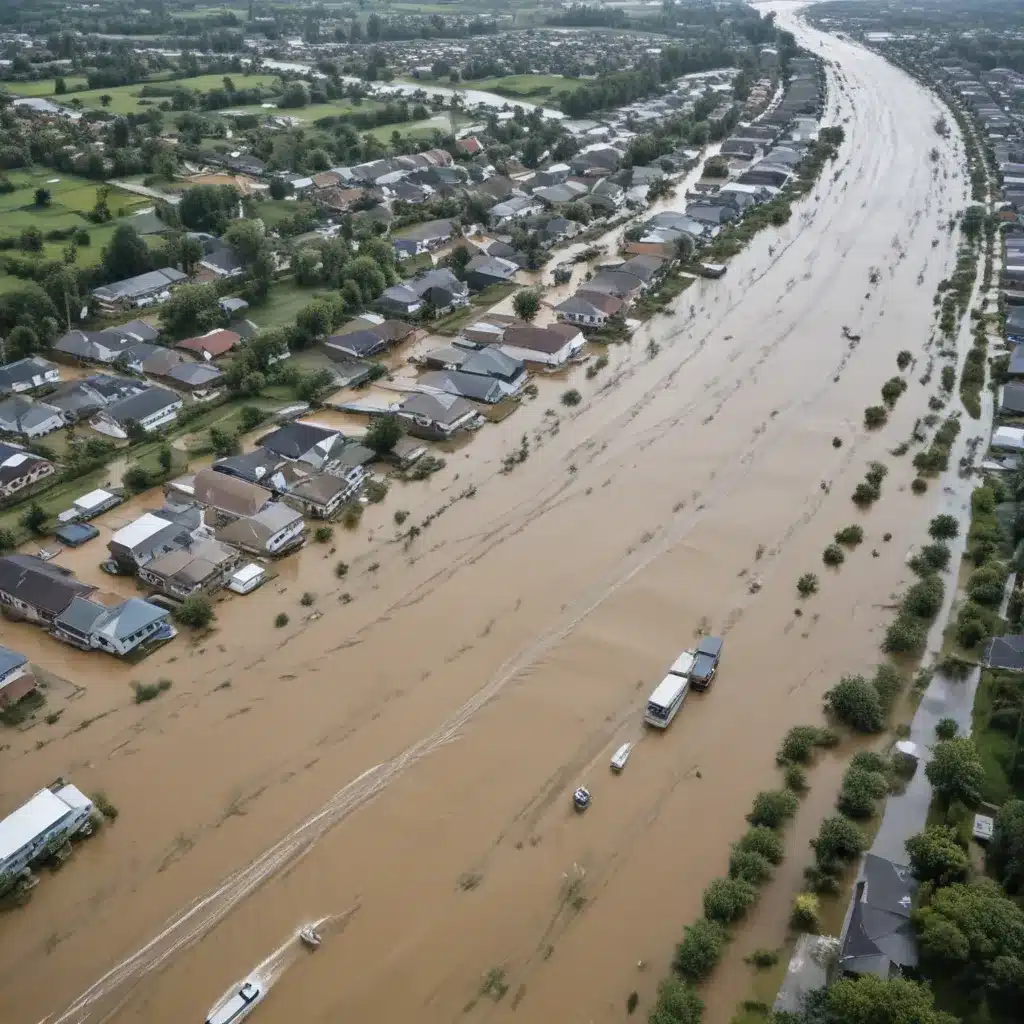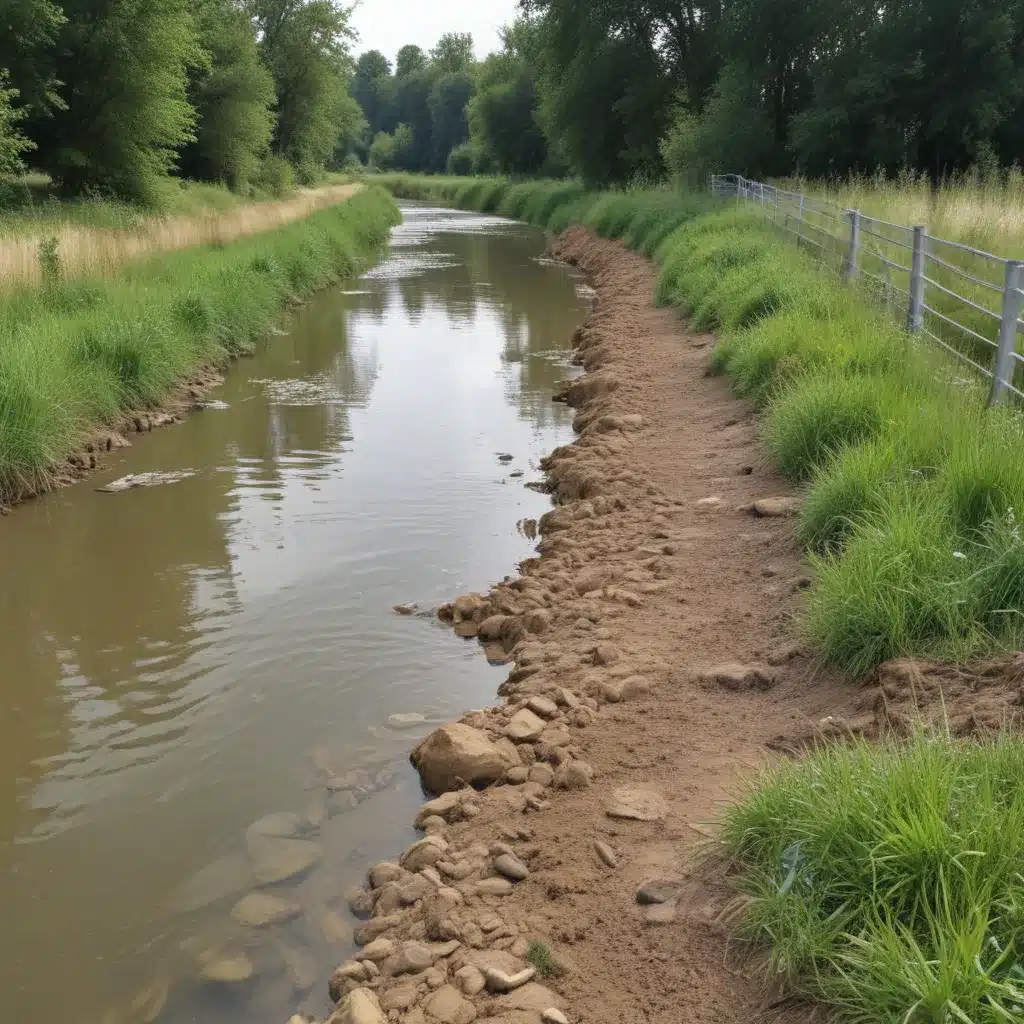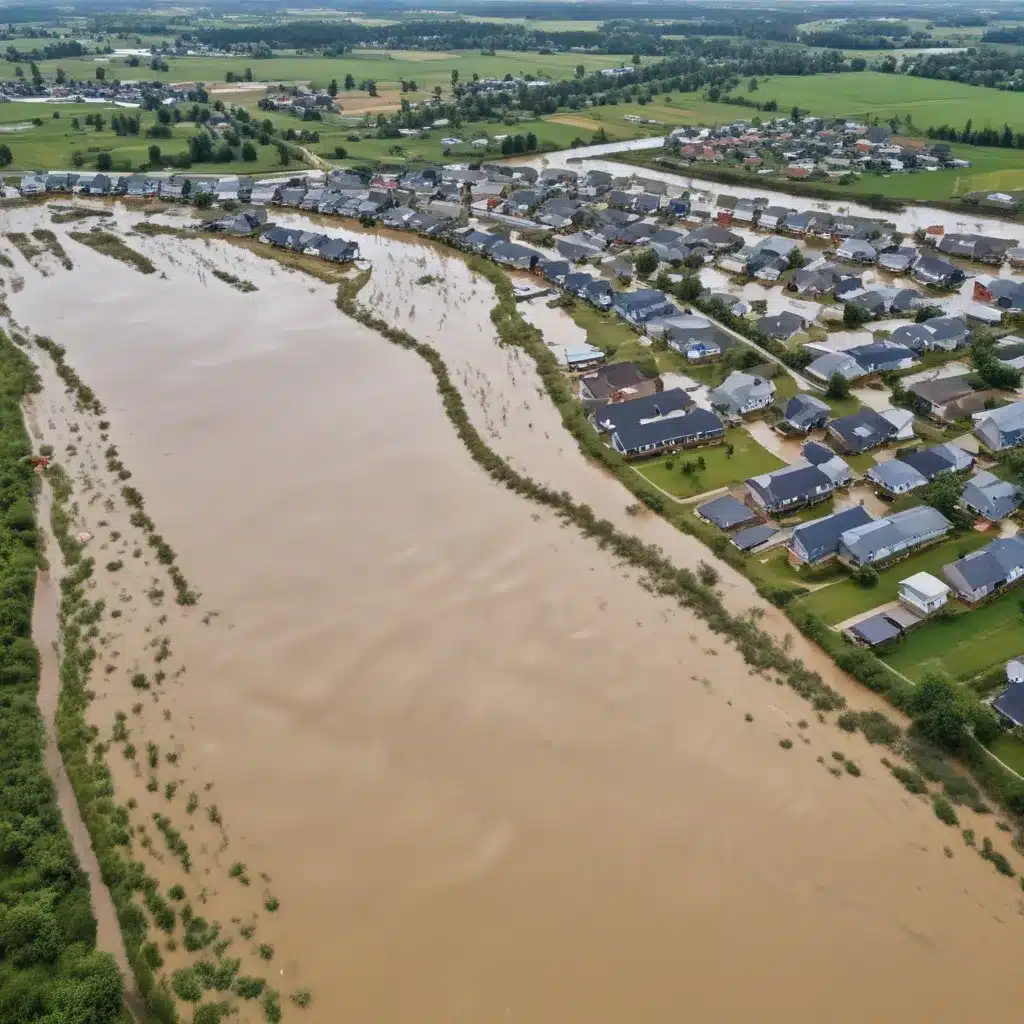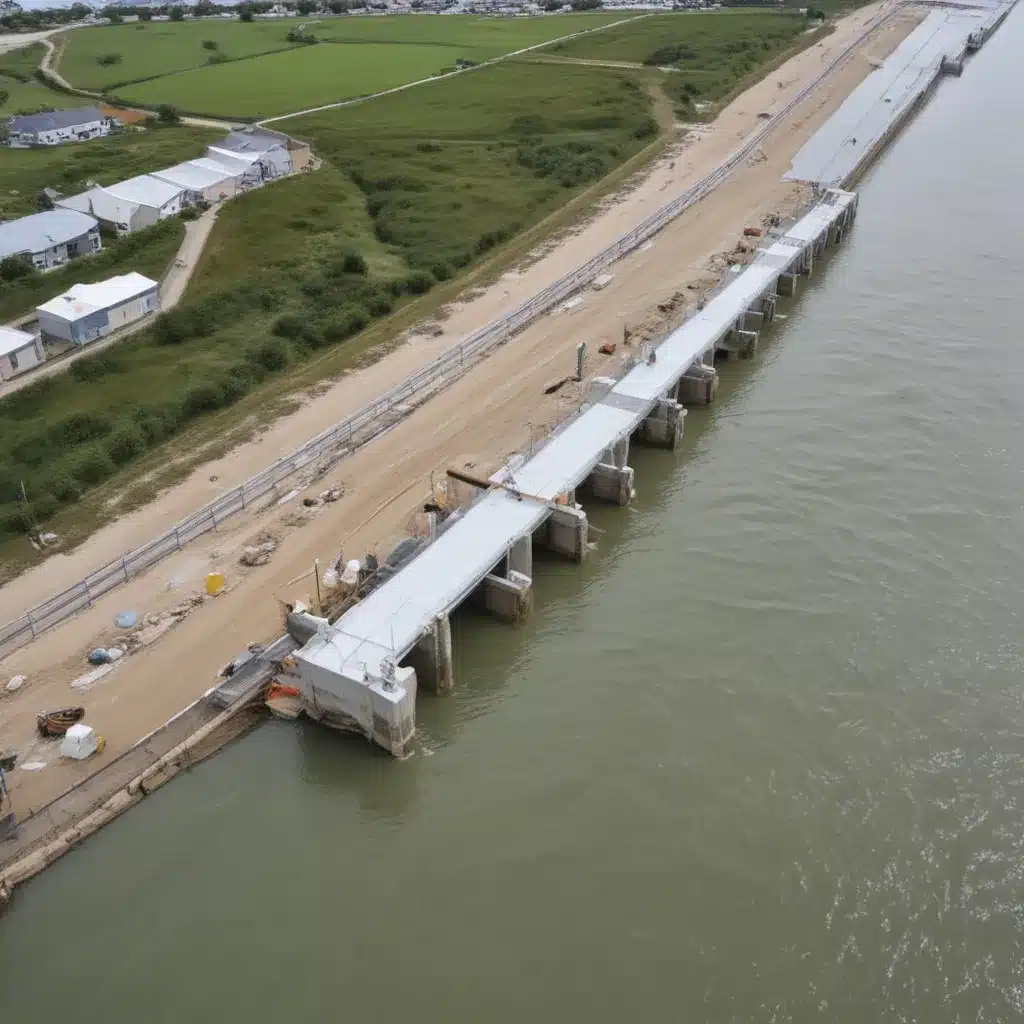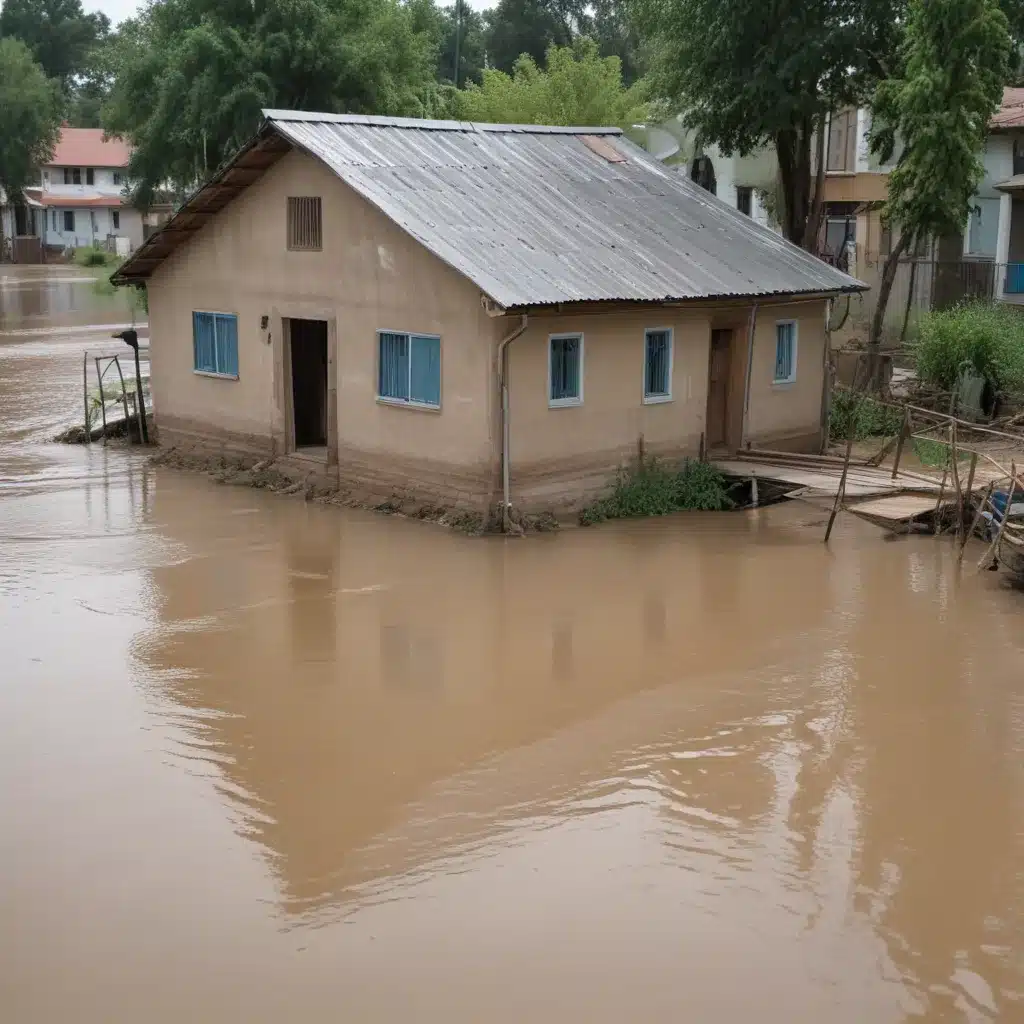As we navigate the ever-changing landscape of flood control, it becomes increasingly imperative to explore cutting-edge technologies that can mitigate the devastating impact of floods. While traditional methods have served us well in the past, innovative solutions are emerging that you may not be aware of. These advancements not only enhance the effectiveness of flood control measures but also revolutionize our approach to tackling this global issue. From smart sensors and remote sensing to data analytics and artificial intelligence, a whole new world of possibilities awaits us. But what exactly are these technologies and how do they work? Let’s embark on a journey to uncover the potential of these game-changing tools in flood control.
Key Takeaways
- Smart sensors and remote sensing technologies play a crucial role in accurate flood prediction and monitoring.
- Flood mapping and risk assessment using advanced technologies like remote sensing, GIS, and LiDAR help in developing effective flood management strategies.
- Early warning systems integrated with real-time monitoring and analysis provide timely alerts and critical information to at-risk communities.
- Data-driven flood prevention strategies, utilizing advanced algorithms and continuous monitoring, offer innovative solutions to predict and control floods more effectively.
Smart Sensors
Smart sensors play a crucial role in modern flood control technologies, providing real-time data and enhancing our ability to monitor and respond to flood events effectively. The advancements in sensor technology have revolutionized the field of flood control, enabling us to develop innovative solutions to mitigate the devastating impacts of flooding.
One of the key applications of smart sensors in flood control is their ability to detect changes in water levels. These sensors are strategically placed in flood-prone areas such as rivers, streams, and drainage systems, constantly monitoring the water levels and providing real-time data to flood control agencies. This data allows us to accurately predict and track the progression of flood events, enabling us to take proactive measures to protect lives and property.
Additionally, smart sensors are equipped with advanced technologies that can detect changes in weather conditions such as heavy rainfall or rapid snowmelt. This information is vital in predicting potential flood risks and issuing timely warnings to communities at risk. By integrating smart sensors with weather monitoring systems, we can ensure that our flood control measures are responsive and adaptive to changing weather patterns.
Furthermore, smart sensors are also used in flood control infrastructure such as levees and dams. These sensors can detect any structural weaknesses or breaches in the infrastructure, alerting us to potential failures before they occur. This early warning system allows us to take immediate action to prevent catastrophic flooding and minimize the impact on surrounding areas.
Remote Sensing
One effective tool in flood control technologies is the use of remote sensing. Remote sensing involves the use of satellite imagery and hydrological modeling to gather important data for flood control purposes. Here are four key points about remote sensing and its role in flood control:
- Enhanced Data Collection: Remote sensing allows us to collect vast amounts of data from a wide range of areas, including inaccessible or hazardous locations. By utilizing satellite imagery, we can obtain high-resolution images of flood-prone areas, helping us to better understand the extent and progression of flood events.
- Improved Flood Prediction: Through the integration of remote sensing data with hydrological modeling, we can enhance our ability to predict and forecast floods. By analyzing satellite images and combining them with other data sources, such as rainfall and river flow measurements, we can develop more accurate flood prediction models. This enables us to issue timely warnings and take proactive measures to mitigate flood risks.
- Monitoring and Early Warning Systems: Remote sensing technology enables real-time monitoring of flood events. By continuously capturing satellite images, we can detect changes in water levels, identify areas at risk, and promptly alert authorities and communities. This allows for more effective evacuation plans and emergency response strategies.
- Post-Flood Assessment and Recovery: After a flood event, remote sensing can aid in assessing the damage and facilitating recovery efforts. Satellite imagery can provide detailed information on the extent of flooding, helping to prioritize areas for relief operations and aid distribution. Additionally, by comparing pre- and post-flood images, we can better understand the long-term impacts of floods on ecosystems and infrastructure.
Internet of Things (IoT)
After exploring the benefits of remote sensing in flood control, we now turn our attention to the subtopic of Internet of Things (IoT). The Internet of Things refers to the network of connected devices that communicate and exchange data with each other. This technology has the potential to revolutionize flood control and contribute to the development of smart cities.
In a smart city, various devices such as sensors, actuators, and cameras are strategically placed to monitor and manage flood situations in real-time. These devices collect data on rainfall, water levels, and weather conditions, which is then analyzed to predict and prevent potential flooding events. The data collected from these connected devices can be used to create accurate flood models, enabling authorities to make informed decisions and take timely actions to mitigate the impact of floods.
To highlight the significance of IoT in flood control, let’s take a look at the following table:
| Benefits of IoT in Flood Control |
|---|
| Real-time monitoring of water levels and weather conditions |
| Early detection and warning systems |
| Efficient deployment of resources and emergency response |
| Data-driven decision making and flood management |
As the table illustrates, IoT enables real-time monitoring, early detection, efficient resource allocation, and data-driven decision making. This technology empowers authorities to respond swiftly and effectively to flood situations, minimizing damage and saving lives.
Data Analytics
Let’s talk about the importance of data analytics in flood control technologies. Real-time flood monitoring allows us to gather and analyze data in real-time, providing us with valuable insights into flood patterns and trends. With predictive analytics, we can use historical data and advanced algorithms to anticipate potential floods and take proactive measures to mitigate their impact.
Real-Time Flood Monitoring
We utilize data analytics to monitor floods in real-time, ensuring proactive response and effective flood control. Real-time flood monitoring is crucial for predicting the severity and impact of floods accurately. By analyzing data from various sources such as weather forecasts, river levels, and historical flood data, we can create accurate models and predictions for flood events. This allows us to develop efficient flood response strategies and allocate resources effectively. Our advanced analytics tools enable us to monitor flood conditions in real-time, providing timely information to emergency responders and decision-makers. With real-time monitoring, we can detect potential flood risks early on and take necessary actions to mitigate the impact of floods. This technology-driven approach revolutionizes flood control by enabling proactive measures and minimizing damage.
Predictive Analytics
Utilizing data analytics, we employ predictive analytics to forecast and anticipate flood events with accuracy and efficiency. By analyzing historical data on weather patterns, water levels, and geographical features, we can identify potential flood-prone areas and predict the likelihood of future floods. This allows us to implement preventive measures and allocate resources effectively to minimize damage and save lives.
Predictive analytics also plays a crucial role in predictive maintenance of flood control infrastructure. By continuously monitoring and analyzing sensor data from levees, dams, and drainage systems, we can detect potential failures or maintenance requirements before they occur. This proactive approach helps us ensure the reliability and functionality of our flood control systems, reducing the risk of catastrophic failures.
Furthermore, predictive analytics aids in demand forecasting for flood control resources. By analyzing historical data on flood events and population growth, we can predict the future demand for emergency response teams, equipment, and supplies. This allows us to plan and allocate resources efficiently, ensuring timely and effective response to flood events.
Predictive Modeling
Predictive modeling is a powerful tool used to forecast and mitigate the impact of floods. By analyzing historical data and using advanced algorithms, predictive modeling applications can provide valuable insights into the likelihood and severity of future flood events. These techniques enable us to make informed decisions and take proactive measures to protect lives and property.
Here are four key aspects of predictive modeling in flood control:
- Data collection and analysis: Predictive modeling relies on collecting and analyzing vast amounts of data, including weather patterns, river levels, and historical flood records. Advanced technologies such as remote sensing, satellite imagery, and real-time monitoring systems enable us to gather and process this data more efficiently than ever before.
- Model development: Once the data is collected, predictive modeling techniques are used to develop mathematical models that can simulate and predict flood events. These models take into account various factors such as rainfall intensity, topography, and land use, allowing us to understand how floods may behave under different scenarios.
- Scenario planning: Predictive modeling allows us to simulate different flood scenarios and evaluate their potential impact. By assessing the outcomes of these scenarios, we can identify vulnerable areas, prioritize mitigation strategies, and develop emergency response plans that minimize the impact of floods on communities.
- Early warning systems: One of the most valuable applications of predictive modeling is in the development of early warning systems. By continuously monitoring and analyzing real-time data, these systems can provide timely alerts and critical information to communities at risk, enabling them to take immediate action and evacuate if necessary.
Flood Mapping
After analyzing historical data and developing predictive models, the next step in flood control is flood mapping. Flood mapping plays a crucial role in assessing flood risk and aiding in effective flood management strategies. By utilizing advanced technologies such as remote sensing, Geographic Information System (GIS), and LiDAR (Light Detection and Ranging), we can create accurate and up-to-date flood maps that provide essential information for decision-making.
To better understand the significance of flood mapping, let’s take a look at the following table:
| Benefits of Flood Mapping | Challenges in Flood Mapping | |
|---|---|---|
| Accuracy | Provides precise information for flood risk assessment | Requires continuous updates to reflect changing conditions |
| Decision-making | Helps in developing effective flood management strategies | Interpretation and visualization can be complex |
| Community Awareness | Raises public awareness about flood-prone areas | Requires effective communication to ensure understanding |
Flood mapping enables us to identify high-risk areas, allowing us to implement targeted measures to mitigate flood impacts. By understanding the extent and severity of potential floods, we can develop evacuation plans, strengthen infrastructure, and implement early warning systems. This proactive approach helps minimize damage, protect lives, and enhance overall resilience in flood-prone regions.
As technology continues to evolve, we can leverage innovative tools like artificial intelligence and machine learning to enhance the accuracy and efficiency of flood mapping. These advancements enable us to process vast amounts of data and generate real-time flood maps, empowering decision-makers with timely information for effective flood management.
Early Warning Systems
Early warning systems play a crucial role in mitigating the impacts of floods by providing timely alerts and crucial information to at-risk communities. These systems utilize innovative technologies such as smart sensors to detect and monitor various flood-related parameters. Here are four key aspects of early warning systems that highlight their importance and effectiveness:
- Real-time monitoring: Early warning systems employ smart sensors that continuously gather data on rainfall, river levels, and weather conditions. This real-time monitoring allows for the timely detection of potential flood events, enabling authorities to issue early warnings and take necessary precautions.
- Data analysis and prediction: The collected data is analyzed using advanced algorithms and models to predict flood patterns and potential risks. By analyzing historical data and current conditions, early warning systems can provide accurate forecasts, helping communities prepare and respond effectively.
- Communication and dissemination: Early warning systems utilize various communication channels, such as mobile apps, SMS alerts, and sirens, to disseminate timely and actionable information to at-risk communities. These systems ensure that individuals receive alerts and instructions promptly, enabling them to evacuate or take appropriate measures to protect themselves and their belongings.
- Integration with response systems: Early warning systems are designed to seamlessly integrate with emergency response systems, enabling quick and coordinated actions. By sharing information with relevant authorities, such as emergency services and local government bodies, these systems facilitate efficient response efforts, ensuring swift rescue and relief operations.
Real-time Monitoring
Real-time monitoring plays a crucial role in flood control technologies. By utilizing data-driven flood prevention methods, we can effectively monitor and analyze the changing water levels and weather patterns. Remote sensing technology allows us to gather real-time information, enabling us to respond promptly and implement necessary measures to mitigate the impact of floods.
Data-Driven Flood Prevention
Utilizing advanced data-driven techniques, flood prevention through real-time monitoring has become a crucial component in mitigating the risks associated with flooding. In today’s era of technological advancements, data-driven flood prevention offers innovative solutions to predict and control floods more effectively. Here are four key benefits of data-driven flood prevention:
- Accurate flood prediction: By analyzing historical data and real-time information, advanced algorithms can accurately predict the occurrence and severity of floods, allowing for proactive measures to be taken.
- Early warning systems: Real-time monitoring enables the timely detection of rising water levels, triggering early warning systems that can alert communities and authorities, providing valuable time to evacuate and take necessary precautions.
- Targeted resource allocation: With data-driven flood prevention, resources can be allocated more efficiently. By identifying vulnerable areas and prioritizing interventions, such as deploying flood barriers or reinforcing infrastructure, the impact of floods can be minimized.
- Continuous monitoring and adaptation: Real-time data collection allows for continuous monitoring of flood-prone areas. This data helps authorities adapt their flood prevention strategies and improve their response to changing conditions.
Remote Sensing Technology
By harnessing remote sensing technology, we can effectively monitor flood conditions in real-time. Remote sensing applications and techniques play a crucial role in flood control, providing us with valuable data to make informed decisions. With the use of satellites, drones, and other advanced sensors, we can gather information about water levels, rainfall intensity, and flood extent. These technologies allow us to monitor flood-prone areas and identify potential risks before they escalate. Real-time monitoring enables prompt response and action, reducing the impact of floods and saving lives. Additionally, remote sensing technology provides valuable data for flood modeling and forecasting, aiding in the development of effective flood prevention strategies. By embracing these cutting-edge technologies, we can revolutionize flood control measures and create a safer and more resilient future.
Flood Forecasting
We rely on accurate flood forecasting to anticipate and prepare for potential disaster. In the field of flood control, flood forecasting plays a crucial role in minimizing the impact of floods and protecting lives and property. Innovative technologies have revolutionized the way we predict and respond to floods, enabling us to make more informed decisions and take proactive measures to mitigate their effects.
Here are four cutting-edge advancements in flood forecasting that are shaping the future of flood control:
- Advanced Flood Modeling: Flood modeling techniques have become more sophisticated, incorporating various factors such as topography, rainfall patterns, and river flow dynamics. This allows us to create detailed simulations of potential flood scenarios, enabling better understanding and preparedness.
- Real-time Data Integration: With the advent of Internet of Things (IoT) technology, sensors and monitoring devices can collect vast amounts of data in real-time. By integrating this data into flood forecasting models, we can improve accuracy and timeliness of flood predictions, providing early warnings and crucial information to communities at risk.
- Machine Learning Algorithms: Machine learning algorithms have shown promise in analyzing historical flood data and identifying patterns. By learning from past events, these algorithms can predict future flood occurrences with greater accuracy, enabling more effective planning and response strategies.
- Social Media Monitoring: Social media platforms have become valuable sources of real-time information during emergencies. By monitoring social media feeds, we can quickly gather information about flooding events, assess their severity, and identify areas that require immediate attention.
With these cutting-edge technologies, flood forecasting continues to evolve and improve. By harnessing the power of innovation, we can enhance our ability to anticipate and mitigate the devastating impact of floods, ultimately saving lives and protecting communities.
Geospatial Technologies
Geospatial technologies play a crucial role in flood control by providing data-driven flood mapping and real-time risk assessment. These technologies allow us to accurately identify flood-prone areas and assess the potential impact of flooding in real-time. By utilizing geospatial technologies, we can make informed decisions and implement effective strategies to mitigate the risks associated with floods.
Data-Driven Flood Mapping
Using advanced data-driven techniques, flood mapping through geospatial technologies provides crucial insights into understanding and managing flood-prone areas. Here are four key reasons why data-driven flood mapping is essential for flood vulnerability assessment and flood mitigation:
- Accurate identification of high-risk areas: Geospatial technologies enable the creation of detailed flood maps that accurately identify areas at the highest risk of flooding. This information helps authorities prioritize resources for flood mitigation efforts.
- Real-time monitoring and early warning systems: By integrating data from various sources, such as weather forecasts and river levels, data-driven flood mapping allows for real-time monitoring and the development of early warning systems. This enables prompt response and evacuation measures to be implemented, reducing the impact of floods.
- Improved land-use planning: Flood mapping provides valuable information for land-use planners, allowing them to make informed decisions when determining suitable locations for infrastructure development. By avoiding flood-prone areas, the risk of damage and disruption caused by flooding can be minimized.
- Enhanced flood response and recovery: Data-driven flood mapping facilitates the efficient deployment of resources during flood events. Emergency responders can use the maps to identify access routes, locate affected areas, and allocate resources effectively, leading to faster response times and more effective recovery efforts.
Real-Time Risk Assessment
As we continue our exploration of flood control technologies, we now turn our attention to the importance of real-time risk assessment through geospatial technologies. In order to effectively manage the risks associated with floods, it is crucial to have up-to-date information about the potential hazards and vulnerabilities in a particular area. Geospatial technologies provide us with the tools to analyze and monitor flood-prone regions in real-time, allowing us to make informed decisions and develop effective flood control strategies. By integrating data from various sources such as remote sensing, Geographic Information Systems (GIS), and satellite imagery, we can identify areas at high risk of flooding and prioritize our efforts accordingly. This dynamic approach to risk management enables us to proactively respond to flood events and minimize their impact on communities and infrastructure.
Drone Technology
We have found that drone technology is an effective tool for flood control. Drones have revolutionized the way we approach flood management, providing us with valuable insights and real-time data that were previously inaccessible. Here are four reasons why drone technology is essential for drone surveillance and flood damage assessment:
- Efficiency: Drones can cover large areas in a short amount of time, allowing us to quickly assess the extent of flood damage. This efficiency enables us to make informed decisions and allocate resources more effectively.
- Accuracy: With high-resolution cameras and advanced sensors, drones provide us with precise and detailed imagery of flood-affected areas. This allows us to identify vulnerable spots and prioritize response efforts accordingly.
- Safety: Drones eliminate the need for manual inspections in hazardous and hard-to-reach locations. They can fly over floodwaters, providing us with crucial information without putting human lives at risk.
- Real-time monitoring: Drones equipped with live streaming capabilities enable us to monitor flood situations as they unfold. This real-time data empowers us to respond promptly to changing conditions and implement necessary flood control measures in a timely manner.
Drone technology is continuously evolving, and we are exploring new possibilities to enhance its capabilities in flood control. From using artificial intelligence to analyze drone-collected data to developing autonomous drones for rapid response, the potential for innovation is vast. By embracing drone technology, we are taking a significant step towards more efficient and effective flood control strategies.
Artificial Intelligence (AI)
After harnessing the power of drone technology for flood control, our attention now turns to the potential of Artificial Intelligence (AI). AI, with its ability to analyze vast amounts of data and make informed decisions, has the potential to revolutionize flood management strategies.
One of the key advantages of AI in flood control is its ability to process large amounts of data quickly and accurately. By analyzing data from various sources, such as weather forecasts, river levels, and historical flood patterns, AI can provide real-time insights and predictions, enabling authorities to take proactive measures to mitigate flood risks. This can include deploying resources to vulnerable areas, implementing evacuation plans, or even adjusting dam release rates.
Furthermore, AI can help optimize flood management strategies by continuously learning and adapting to changing conditions. By analyzing past flood events and their outcomes, AI algorithms can identify patterns and trends, enabling authorities to refine their response strategies. This iterative learning process can lead to more effective and efficient flood control measures, ultimately reducing the impact of floods on communities.
Additionally, AI can enhance early warning systems by integrating data from various sensors and sources. By analyzing this data in real-time, AI algorithms can identify potential flood risks and issue timely alerts to authorities and residents. This can provide valuable time for preparation and response, potentially saving lives and minimizing damage.
Machine Learning (ML)
One of the most promising technologies in flood control is Machine Learning (ML), which has the potential to revolutionize how we predict and respond to floods. ML applications have the ability to analyze vast amounts of data and identify patterns that may not be readily apparent to human analysts. This enables us to make more accurate predictions about when and where floods are likely to occur, allowing for timely and targeted response efforts.
Here are four key ways in which ML algorithms are being utilized in flood control:
- Early Warning Systems: ML algorithms can analyze real-time data from various sources such as weather forecasts, river levels, and soil moisture to detect patterns that indicate an impending flood. By identifying these patterns, ML can provide early warnings, giving communities more time to prepare and evacuate if necessary.
- Flood Mapping: ML algorithms can process satellite imagery and other geospatial data to create detailed flood maps. These maps can help emergency responders and urban planners identify high-risk areas and develop strategies to mitigate flood damage.
- Reservoir Management: ML algorithms can optimize the operation of reservoirs by analyzing historical data on rainfall, river flow, and water demand. By predicting future water levels and optimizing release strategies, ML can help prevent overflow and reduce the risk of downstream flooding.
- Damage Assessment and Recovery: ML algorithms can analyze post-flood data such as satellite imagery and sensor readings to assess the extent of damage and prioritize recovery efforts. This can help allocate resources more efficiently and speed up the recovery process.
Virtual Reality (VR)
Let’s talk about how Virtual Reality (VR) can revolutionize flood control technologies. With immersive flood simulations, we can experience realistic scenarios and better understand the impact of floods on our surroundings. VR also offers a unique training tool for disaster response, allowing us to practice emergency procedures in a safe and controlled environment. By enhancing flood preparedness through VR, we can improve our ability to mitigate the devastating effects of floods.
Immersive Flood Simulation
Immersive flood simulation using virtual reality technology enhances the understanding and preparedness for potential flood events. By immersing users in a virtual environment, they can experience realistic flood scenarios and gain a deeper understanding of the impact and challenges associated with flooding. Here are four key benefits of immersive flood simulation:
- Enhanced visualization: Virtual reality allows users to visualize floods in a realistic and immersive way, providing a more engaging and impactful experience than traditional methods.
- Real-time interaction: Users can interact with the virtual flood environment, making decisions and observing the consequences in real-time. This helps improve decision-making skills and preparedness for actual flood events.
- Risk assessment: Immersive flood simulation enables users to assess potential risks and vulnerabilities in their surroundings, aiding in the development of effective flood control strategies.
- Training and education: Virtual flood simulations serve as valuable training tools for emergency responders, helping them practice response strategies and improve their readiness for flood emergencies.
Immersive flood simulation using virtual reality technology revolutionizes flood preparedness and empowers communities to mitigate the impact of potential flood events.
Training for Disaster Response
Continuing the exploration of flood control technologies, we now turn our attention to the use of virtual reality (VR) in training for disaster response. Virtual reality provides a unique and immersive experience that allows trainees to simulate real-life scenarios and practice their response techniques in a safe and controlled environment. By utilizing VR, training techniques for disaster management strategies can be enhanced, resulting in more effective and efficient responses during actual emergencies.
| Training Techniques | Disaster Management Strategies | Benefits |
|---|---|---|
| Virtual simulations | Enhances decision-making skills | Realistic and immersive experience |
| Interactive scenarios | Improves coordination among responders | Safe and controlled environment |
| Team-based exercises | Enhances communication and collaboration | Training for various scenarios |
Virtual reality technology offers a promising solution for training disaster response teams, as it provides a realistic and engaging learning experience. By incorporating VR into training programs, responders can develop their skills, improve coordination, and enhance communication, ultimately leading to more effective disaster management strategies.
Enhancing Flood Preparedness
To enhance flood preparedness, virtual reality (VR) technology provides an innovative and effective approach. By simulating flood scenarios, VR allows individuals to experience the challenges and dangers of a flood evacuation firsthand. This immersive experience enables them to better understand the urgency and importance of preparedness measures. Here are four ways VR enhances flood preparedness:
- Realistic training: VR provides a realistic and interactive training environment, allowing individuals to practice evacuation procedures and decision-making in a safe setting.
- Community engagement: VR offers an engaging platform for community members to come together and participate in virtual drills and simulations. This fosters collaboration and a sense of shared responsibility in flood preparedness.
- Risk assessment: VR technology can be used to assess potential flood risks in specific areas, helping authorities identify vulnerable locations and develop targeted mitigation strategies.
- Public awareness: Through immersive VR experiences, the public can gain a deeper understanding of the impact of floods, fostering a culture of preparedness and encouraging proactive measures.
With VR technology, flood preparedness becomes more engaging, realistic, and effective, empowering communities to better respond to future flood events.
Robotics
Robotic technology plays a crucial role in the field of flood control. With its ability to perform tasks autonomously, robotics is enhancing flood preparedness in innovative ways. From monitoring and data collection to rescue operations, robots are revolutionizing how we approach flood control.
One of the key applications of robotics in flood control is in the area of monitoring. Autonomous drones equipped with high-resolution cameras and sensors can be deployed to gather real-time data about flood conditions. These drones can fly over affected areas, capturing images and videos that help authorities assess the extent of the flooding. This valuable information enables them to make informed decisions and allocate resources effectively.
Robots also play a vital role in rescue operations during floods. They can be used to navigate treacherous terrains and reach areas inaccessible to humans. Equipped with sensors and cameras, robots can locate and rescue stranded individuals, reducing the risk to human rescuers. They can also deliver essential supplies such as food, water, and medical aid to those in need.
In addition to monitoring and rescue operations, robotics is advancing flood control through the development of intelligent flood prediction systems. By analyzing vast amounts of data collected from sensors and satellites, robots can help predict and mitigate the impact of floods. This allows authorities to take proactive measures, such as reinforcing vulnerable infrastructure or implementing evacuation plans, to minimize the damage caused by floods.

